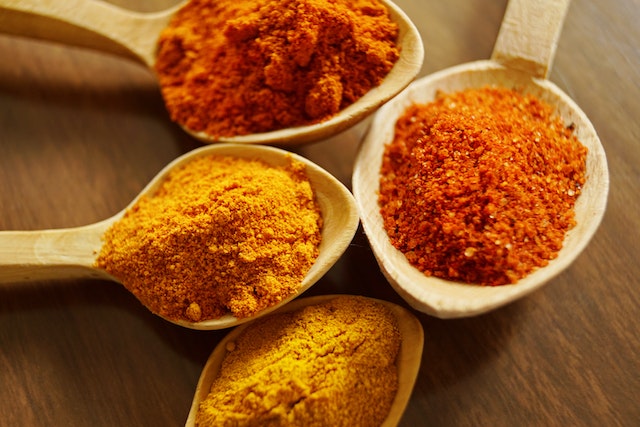The official scientific name for turmeric is curcuma longa and it originates from India. It is a rhizomatous herbaceous plant, which means that it sprouts rhizomes, just like the potato plant. The turmeric resembles ginger more closely actually, being part of the same plant family. It is valued not just for its aroma, but also for its high value of curcumin (which also gives the plant and the color their names). The root of the plant is harvested, dried in hot ovens and then ground into the powder we’re all familiar with. But turmeric is used in other forms as well, not just as a spice powder: it also brewed in a tea or taken in a concentrated dosage in capsules.
The main turmeric health benefits
Although these benefits aren’t powerful enough to replace actual medication if you suffer from any disease where turmeric is considered to be an adjuvant, consuming a bit of turmeric regularly can help with a lot of potential problems. Just remember that neither turmeric nor any other plant supplements can replace a healthy diet and life-style, nor can they replace proper medication prescribed by a doctor. That being said, the turmeric health benefits are rumored by some to be over 20 in number, but here are the most effective ones:
- Internally, turmeric can help with: liver and gastro-intestinal problems, pulmonary problems, strains, wounds, sprains and pains. Additionally, when taken regularly, turmeric has proven to have anti-inflammatory, anti-fungal, anti-bacterial, anti-tumor, antioxidant and antiviral properties. That means that a regular intake of the plant can help keep most diseases at bay, protect you from oxidative stress and boost your immune system.
- Externally, the topical application of turmeric juice is excellent as a skin cure for a variety of conditions, like eczema, chicken pox, shingles, scabies or allergies of various sorts. Some people give turmeric supplements to dogs in order to help them overcome the various skin conditions that these pets are prone to. Also, women (but some men as well, of course), use turmeric powder or broken turmeric capsules as an ingredient for a home-made facial mask with powerful anti-acne
- Other potential turmeric health benefits (which are currently being researched): turmeric is currently being evaluated for alleged anti-cancer properties, for abilities to help with Alzheimer’s disease, diabetes, kidney disease, irritable bowel disease and arthritis. Bear in mind that even if these trials will lead to inconclusive results, many of the other turmeric health benefits still remain.
How to use turmeric
If you happen to get your hands on some fresh turmeric, you can grate a thumb-sized piece of it (just as you would use ginger) and infuse it in 2 cups of hot water for a potent tea. You can also use grated fresh turmeric in a variety of recipes, just as you would use ginger, once again. Of course, in order to have access to a more intense version of the turmeric health benefits, it would be better if you would consume it raw: just add a bit of this grated fresh pulp to your blender whenever making a smoothie and you’re good to go. Some research suggests its effects are made more potent when combined with milk, so maybe you can dissolve a pinch of turmeric powder in your hot milk drink too, besides adding milk to any turmeric smoothie you’ll make.
You can also access the health benefits of turmeric by taking supplements based on turmeric extract. The folk medicine of South Asia has prescribed this plant as a cure to liver and stomach ailments for millennia, and modern turmeric pills target this benefit as well. According to the official NIH platform (the National Institutes of Health), the main turmeric health benefits described above are sometimes exaggerated, but should be taken seriously and pursued because some of them were backed by science and further research is being taken to confirm the rest. Nevertheless, the NIH warns, people should also be careful because turmeric can also have some side effects when ingested in too large quantities.
The side effects of turmeric, when taken into large quantities, can include nausea, indigestion and diarrhea. Some studies have confirmed liver problems in animals in case of over-dosing, but no such problem have been reported in humans (on the contrary, liver protection is one of the main turmeric health benefits). The plant should also be avoided by people with gallbladder disease, as it can sometimes worsen the condition. The NIH also advises you to communicate with your medical care providers and inform them if you take turmeric as a dietary supplement or as tea, so that they know how the plant may interact with the rest of your medical treatment.

